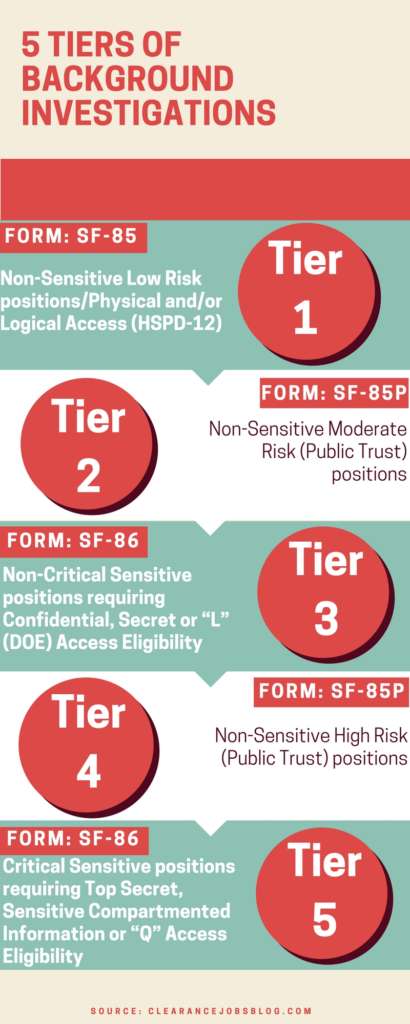
ODNI, OPM planning series of sweeping updates to federal personnel vetting system
Leadership within the Office of the Director of National Intelligence and Office of Personnel Management have agreed to a broad framework that's designed to...
Best listening experience is on Chrome, Firefox or Safari. Subscribe to Federal Drive’s daily audio interviews on Apple Podcasts or PodcastOne.
The Trump administration is planning to roll out a series of sweeping changes to suitability, credentialing and security clearance procedures that officials say will bring more speed and efficiency to a process that’s been stuck in the past for decades.
The Office of the Director of National Intelligence and Office of Personnel Management on Thursday described, for the first time in more significant detail, the pieces of new framework that will be gradually announced and strategically implemented throughout this year and beyond.
“We’re exhausted at admiring the problem,” Bill Evanina, director of ODNI’s National Counterintelligence and Security Center, said of the personnel vetting process at a briefing with reporters Thursday afternoon.
It’s the first time government has taken a look at the personnel vetting process as a whole in at least 50 years, Evanina said. Agencies have made “piecemeal” attempts to make the suitability and clearance processes more efficient and effective in the past.
He, along with other top leaders who sit on the Performance Accountability Council (PAC), launched the “Trusted Workforce 2.0” initiative back in March to address many of the longstanding frustrations that government and industry employees alike have been experiencing for decades. The committee brought in working federal security clearance investigators, members of academia, members of the private sector who have little knowledge of the existing personnel vetting system and even a Nobel Peace prize winner to lend their ideas.
A steering committee met for three days in March to discuss frustrations with the suitability, credentialing and security clearance system. The complaints are numerous and have been well-documented by industry in recent years. The security clearance process is too long and confusing. Contractors who have clearance at one agency must wait months for clearance at another. And industry has no visibility into where their employees are in the process to begin with.
“It’s a big elephant, and we need to take small bites,” Evanina said.
Key officials within the PAC, which include the director of national intelligence, director of the Office of Personnel Management and director and deputy director for management at the Office of Management and Budget, have agreed to a single, core doctrine that will govern how all agencies will determine trust and grant access and clearance to their employees.
The White House is reviewing this framework now, Evanina said. He expects to brief agency leaders of the plans March 8.
From there, ODNI and OPM have an “aggressive timeline” to roll out and implement new polices and interpretive guidance to address a long list of new policies and procedures.
The number of background investigative tiers, for example, will be cut from five to three. Currently, federal employees and contractors have five options, from “non-sensitive, low-risk” to “top-secret.” In the future, agencies will issue top secret, secret and “trusted/low-risk” clearances to trusted employees and contractors.
Perhaps the biggest change will come in how government will establish trust with an individual and continuously vet that person’s trust over a period of time. The goal to give both employees and contractors more flexibility to move around government — and in and out of the private sector, Evanina said.
- Initial vetting: will establish a baseline of trust with an individual who is just joining government or applying for a security clearance.
- Continuous vetting: will replace the traditional five-or-ten-year periodic reinvestigations with a model that constantly identifies and flags risks for a trusted insider.
- Upgrading an individual’s level of vetting: will be commensurate with an employee or contractor’s move to a position with higher-level risk.
- Reestablishing trust: will restore trust with an individual who has a break in service and hasn’t been subject to continuous vetting.
- Transfer of trust: will allow a trusted individual to take his or her security clearance with him from one agency to another.
Periodic reinvestigations will be replaced with a continuous vetting process, which the Defense Department and other agencies have already started using in an effort to winnow down the existing backlog of security clearances and other investigations.
The new framework, Evanina added, will ultimately tie into the insider threat programs that agencies have been building out for the past several years.
Agencies, have, of course, struggled with funding, IT, legal and cultural challenges in implementing insider threat programs. That won’t change overnight, Evanina acknowledged, as ODNI begins to issue and mandate new policies and practices.
Other aspects of the security and suitability processes will change as well over time.
ODNI will allow federal investigative agents to use a broader spectrum of tools and methods to vet a federal employee or contractor. Instead of flying across the country to settle an issue of minor overdue debt, for example, an investigator could conduct an electronic video interview to settle the matter.
The existing suitability and investigative standards that government security clearance providers such as the National Background Investigations Bureau and Defense Department use to evaluate and determine trust, will also change.
Evanina said the Trusted Workforce 2.0 committee brought in behavioral analysts to develop new, simpler principles that will guide how agencies decide if an employee or contractor is “trusted.”
In addition, the new framework will eventually allow investigators to tap into a “trusted information provider program,” which Evanina said will be designed to cut back on the time and duplicative efforts that agencies currently spend to collect basic information on a potential employee or contractor.
The goal is to develop a crop of “authorized providers,” such as human resources practitioners, military recruiters and others in the public and private sector, who have already affirmed basic information about a person and could easily confirm those details for an agency looking to provide a security clearance to a prospective federal employee.
The new framework and coming policy documents are, in a sense, separate from the Trump administration’s push to merge the NBIB with the Pentagon and establish a single security clearance provider for all of government.
An executive order that would authorize both the merger and subsequent reorganization of NBIB and DoD personnel and resources to form a single governmentwide security clearance agency is still pending.
But Evanina and Michael Rigas, OPM’s deputy director, said NBIB piloted some of these concepts in recent months in an attempt to work down the current investigatory backlog.
It currently stands at 551,000, a 24 percent drop the from 725,000 high in early 2018.
Copyright © 2025 Federal News Network. All rights reserved. This website is not intended for users located within the European Economic Area.
Nicole Ogrysko is a reporter for Federal News Network focusing on the federal workforce and federal pay and benefits.
Follow @nogryskoWFED
Related Stories






